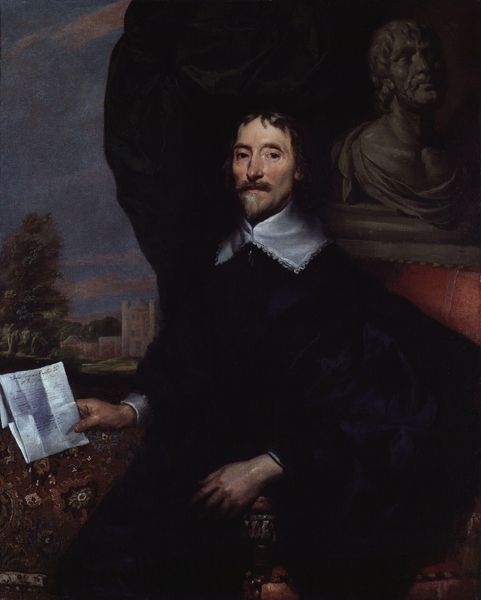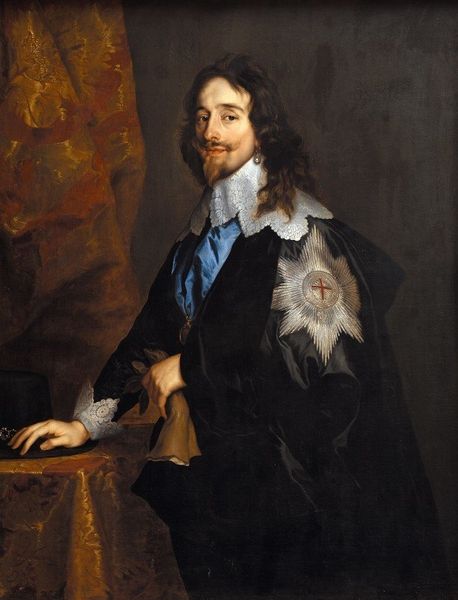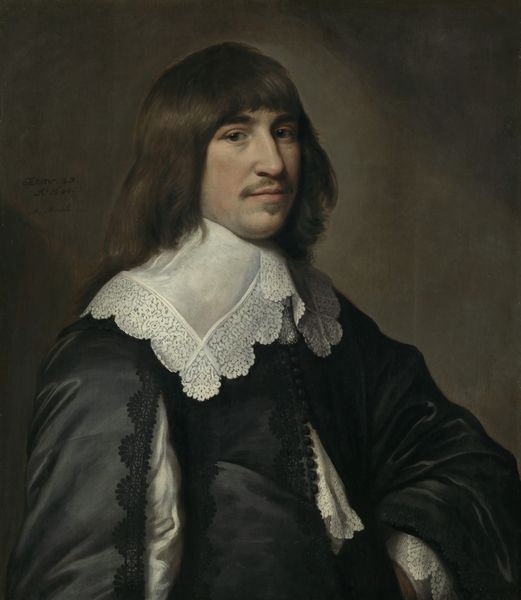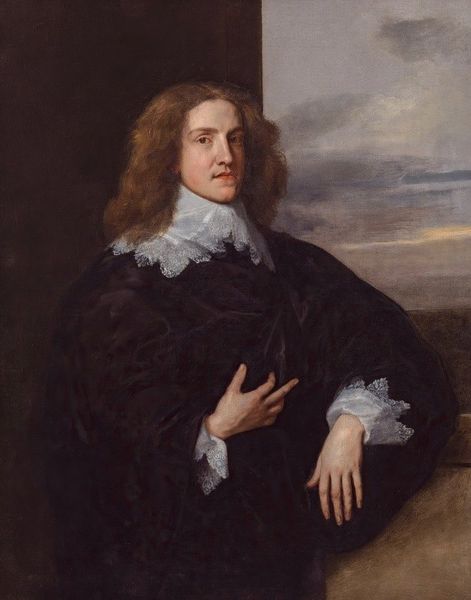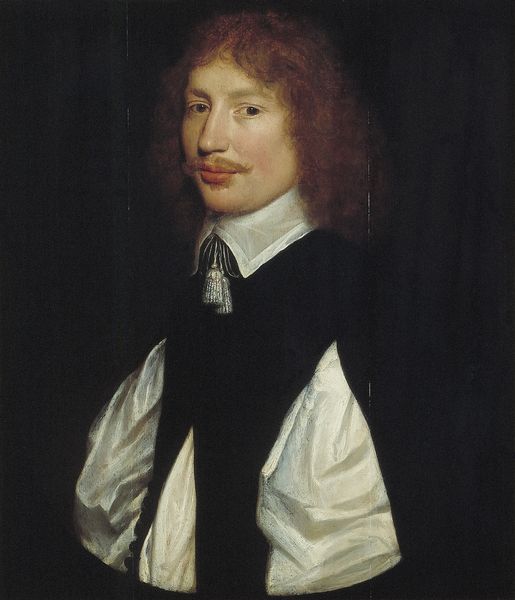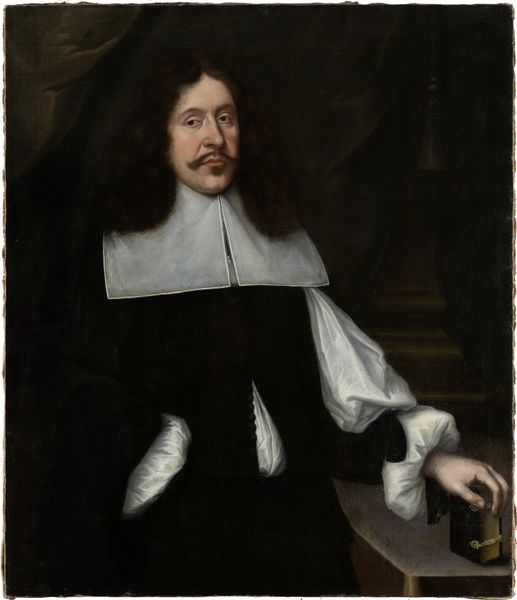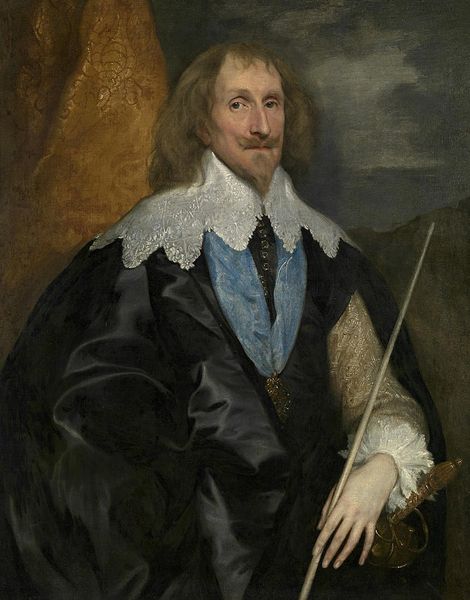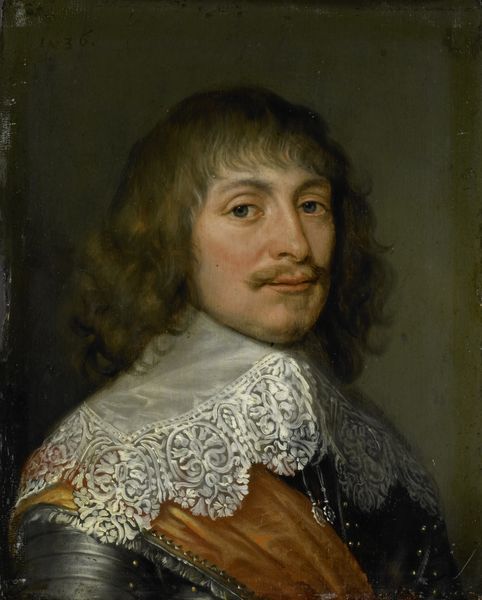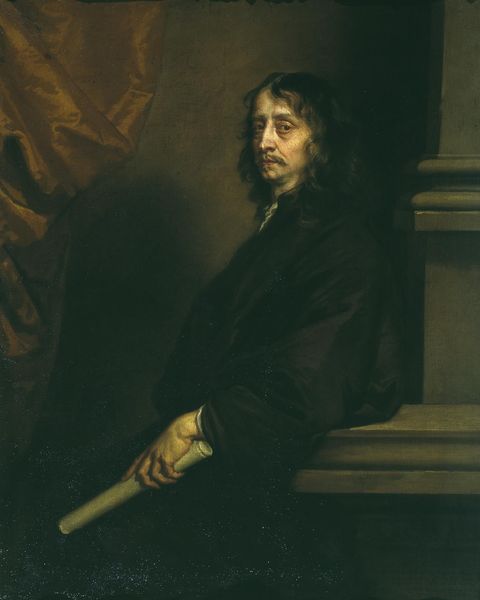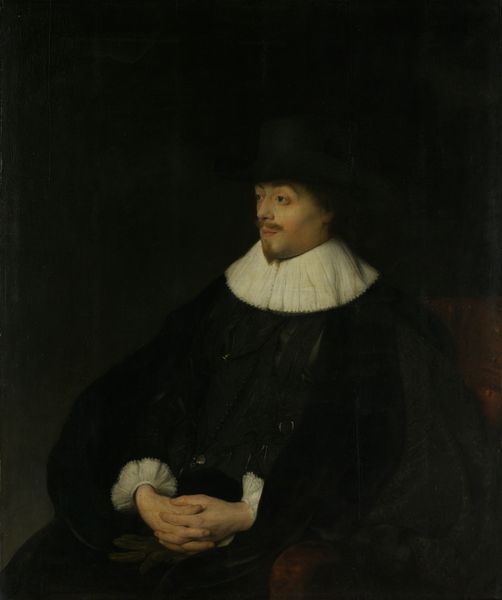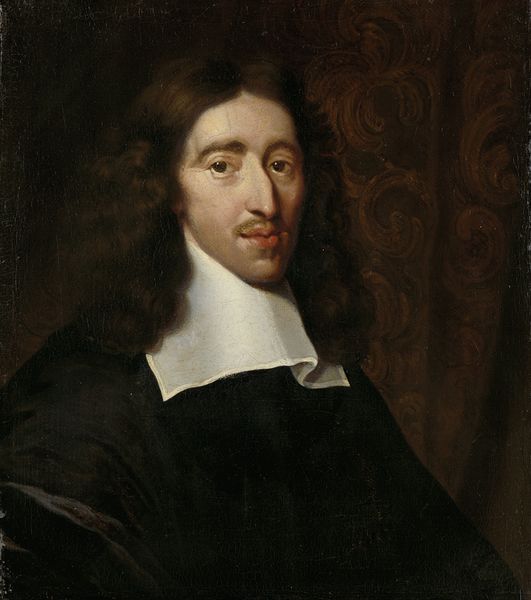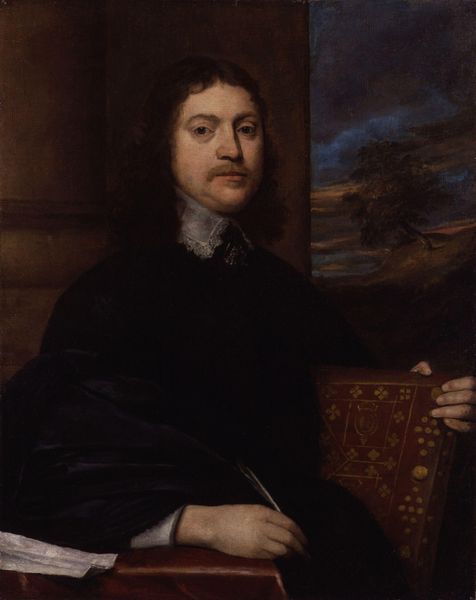
Dimensions: support: 1052 x 841 mm frame: 1260 x 1045 x 86 mm
Copyright: CC-BY-NC-ND 4.0 DEED, Photo: Tate
Editor: Here we have Van Dyck's "Portrait of Sir William Killigrew." The dark clothing and serious expression give it a rather somber feel. What strikes you about this portrait? Curator: Van Dyck presents Killigrew within a very specific power dynamic. The relaxed pose and landscape background speak to privilege, but consider the context: the English Civil War was brewing. Is this portrait an assertion of royalist identity, a subtle act of defiance in a changing social landscape? Editor: That's a perspective I hadn't considered. So the portrait isn't just a likeness, but a statement? Curator: Exactly! It invites us to consider how identity, especially masculine identity, was being carefully constructed and projected during a period of immense political and social upheaval. Something to think about when viewing portraits.
Comments
tatebritain 7 months ago
⋮
http://www.tate.org.uk/art/artworks/van-dyck-portrait-of-sir-william-killigrew-t07896
Join the conversation
Join millions of artists and users on Artera today and experience the ultimate creative platform.
tatebritain 7 months ago
⋮
Sir William Killigrew was a courtier to Charles I and, after the Restoration, Charles II. He was appointed Vice-Chamberlain to the queen, Catherine of Braganza, an influential and well rewarded post. He was also a noted playwright. The ring tied by a ribbon to his black satin jacket may allude romantically to his wife or denote mourning for a friend or relative. The composition and landscape echo the work of the 16th-century Venetian painter Titian. Titian’s paintings were admired by Charles I and his court, and greatly influenced van Dyck. Gallery label, July 2024
